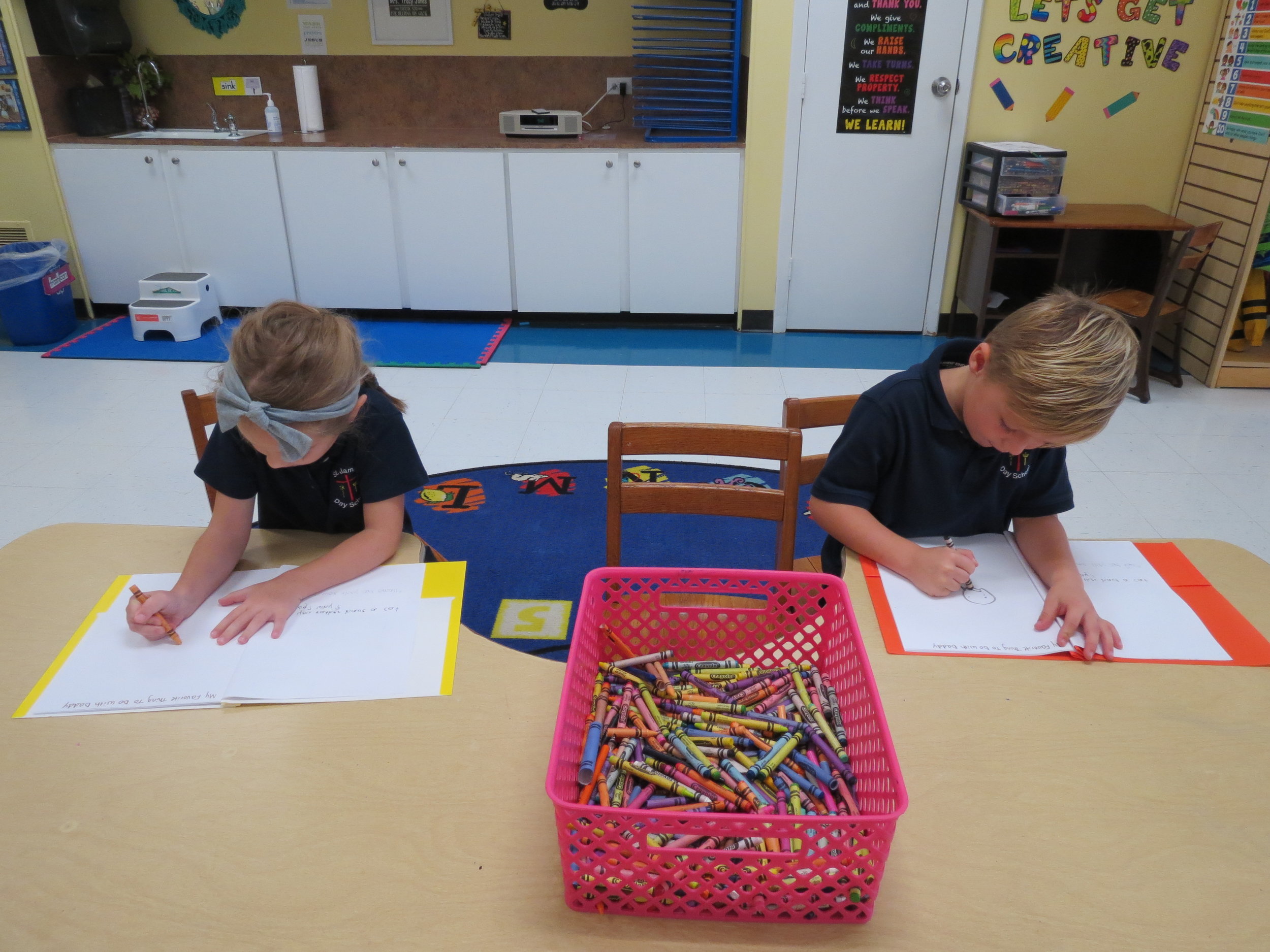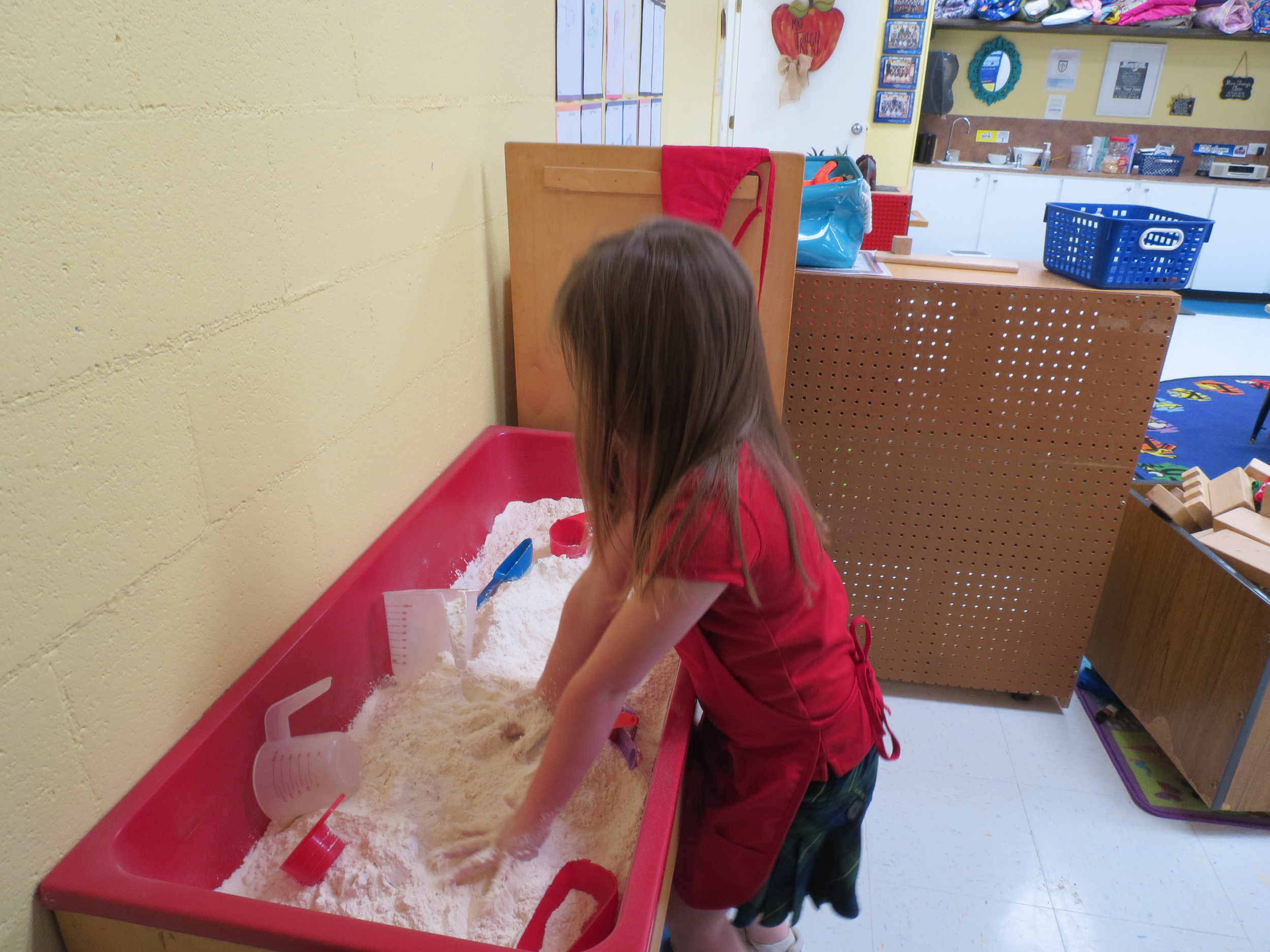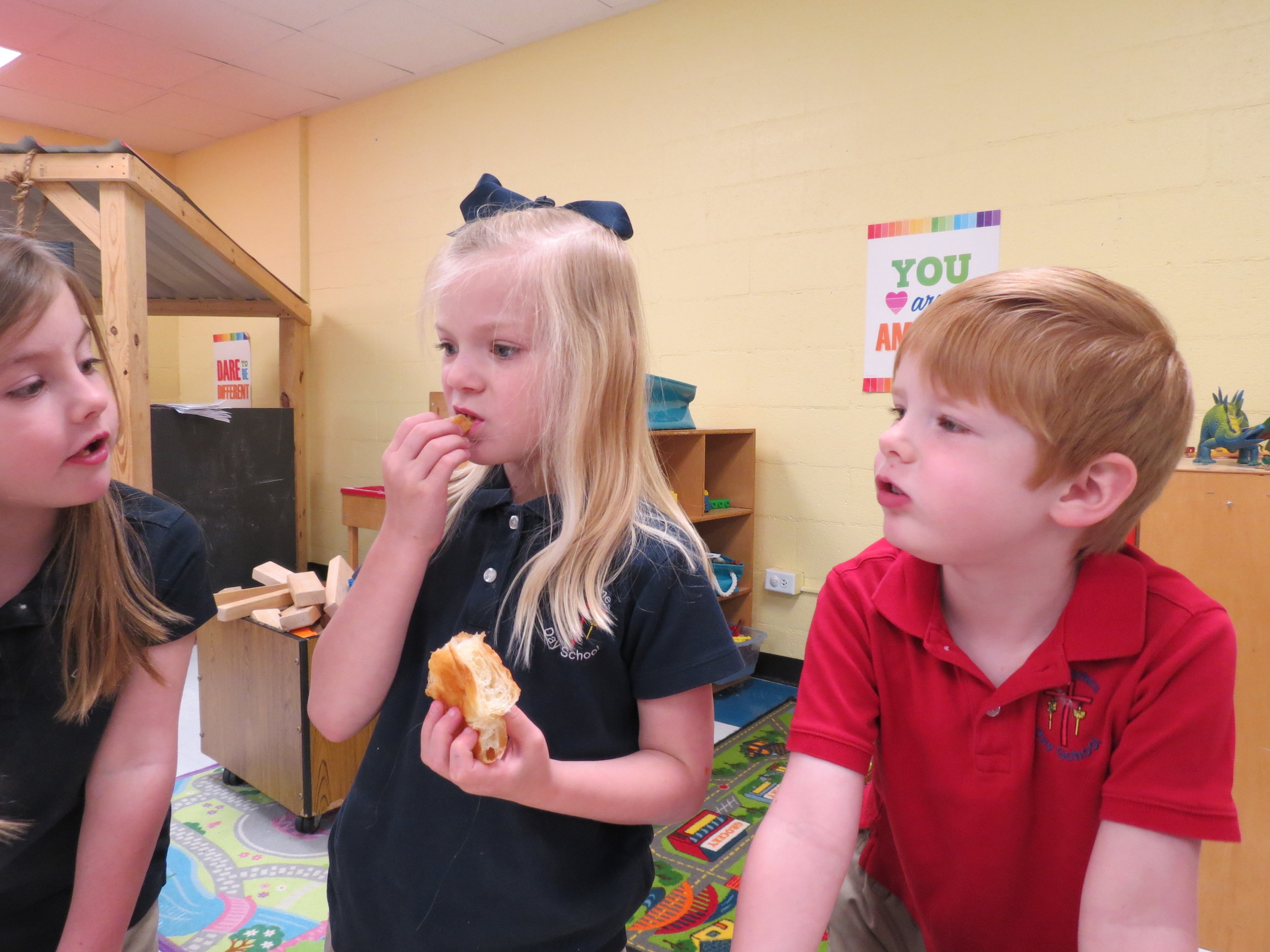Our focus question this week was "Where do pets live?" Here are our answers:
Reed - “at houses”
Braxton - “behind a fence”
Hudson - “at the zoo”
Carrington - “at the pet store”
Able - “with God up in heaven”
Aubrey - “in a cage”
Penelope - “a farm”
It’s all fun and games with the class pet until it’s your turn to clean the bunny cage, but I am all about life lessons! I love being able to create exploratory opportunities and plan experiences for the children to relate and understand concepts about living things.
We had a great time at Donuts for Dad. The children water colored ties, painted rocks, drew a picture and answered questions about their Dads/Special Guest.
We are going to the library on Mondays and the fourth grade class is reading to us. This is such a special time for our class. The little ones look forward to the older children reading to them, and it is great reading practice for the fourth grade. Children who engage in frequent activities with books have larger, more literate vocabularies. These children learn to read better than children who have few book experiences.
Each child has their own personal journal. Each week they are invited to draw in their journals, or sometimes I ask open-ended questions and I record their ideas. Journaling gives me the opportunity to find out what is happening with the children outside of the classroom. To write, children need to understand that letters are symbols. By exploring writing, children learn about letters.
The children had to take tweezers and pick up wooden pegs and place them into holes. Fine-motor skills are necessary to control writing tools!
The children were able to use headphones in technology to listen to instructions and then carry them out in an ABC game. Also, the children were given goggles and they went on a virtual tour of a Veterinarian office. Tools and technology make work easier and help people solve problems.
The children had to maneuver through an obstacle course in P.E. They had to go over and under bars, walk through a hula hoop, jump on dots and jump over a small hurdle. They had a great time with this activity. Regular physical activity helps children build and maintain healthy bones, muscles, and joints. Motor development is not automatic. If children are to develop physical competence, they need a variety of equipment and materials; planned, appropriate movement experiences; and opportunities to practice and apply previously learned skills.
Next week ends our pet study. We will study roads next, so check back later in the month for more of our PreK adventures!
Mrs. Tracy
















































































































































































































































